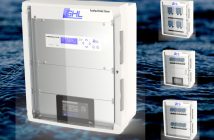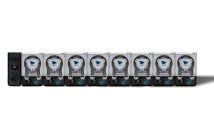Although very similar in form and function, a quarantine tank is, in my honest opinion, very different than a hospital tank. The goal for each setup is to isolate livestock in order to prevent livestock in the main aquarium from getting a disease or parasite that is present (or could be present) on the isolated fish or coral, but each are employed at different times and utilize different equipment and filtration methods.
Quarantine Tank
The main goal of the quarantine tank is to house new, incoming livestock to prevent parasites or diseases from getting into your display aquarium and harming all of your livestock. The quarantine aquarium should be setup like any other aquarium, containing an established sandbed, live rock, and filtration. Having an established quarantine aquarium is especially important for housing new coral additions since corals have very specific requirements for survival. Just about any size tank should suffice, but for larger fish you will obviously need a larger quarantine aquarium. A canister filter can be beneficial for this type of setup as well, so long as the media is changed out regularly. An ultraviolet (UV) sterilizer will also be very beneficial for this setup, but for most aquarium keepers it is out of the budget.
In this setup, we are assuming that the livestock is healthy to some extent, and not in need of any medication. However, the livestock is presumed to be the carrier of potential diseases and parasites, and therefore not ready to go into the main tank. The reason for having sand and rock in this tank is for ammonia and nitrite processing. The livestock is already stressed from being moved from the local fish store or shipped overnight from an online vendor, so the aquarium must be able to handle excess nutrients. To prevent too quick a buildup of these nutrients, I highly recommend that you either purchase very few fish at a time, or setup multiple quarantine tanks.
Some medications and in-tank treatments can be used on the quarantine tank, but it is not suggested as most medications are harmful to beneficial bacteria and invertebrates. This is where the hospital tank comes into play.
Hospital Tank
The hospital tank is a bit different than a quarantine tank. The overall goal is similar, in that they both tanks serve to keep some livestock separated from the rest. But the main differences between the two are the overall setup and when each tank get employed. The hospital tank is typically setup after the livestock has already been introduced to the main tank, but since their introduction have encountered some sort of problem. The reason you cannot treat the main tank is due to the fact that many medications and treatment methods are detrimental to corals and other livestock in the display aquarium. Copper and hyposalinty, for example, are both extremely harmful to corals and invertebrates, and therefore cannot be employed in the display aquarium. Once a disease or parasite shows up, the distressed livestock is to be immediately removed from the display aquarium and placed into the hospital tank. After determining the issue for the sick livestock, the appropriate medication or technique can be utilized.






Pingback: Qt fish anyone??? - Page 2 - Manhattan Reefs()